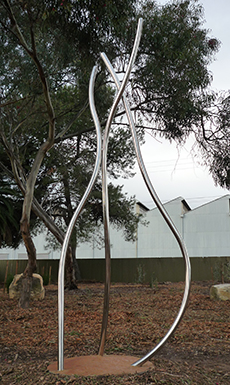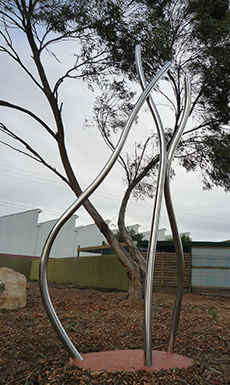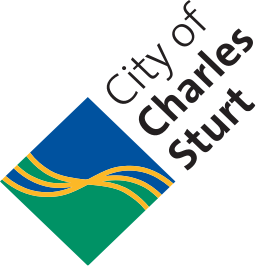Kaurna Meyunna 'Kaurna People'
Marni na budni, Kaurna meyunna yertangga
Greetings to the Country of the Kaurna people
And welcome to these Kaurna Meyunna web pages. There is a big story to tell about Kaurna Meyunna, the Kaurna People, and now the Web provides another place to tell story. Not like the old places but still a good place.
Kaurna Meyunna have been the custodians of this Country where the City of Charles Sturt is since the first sunrise. It was the best summer camping place with the coast, rivers, wetlands, hunting grounds and foraging places. Here the ancestors were born, lived and died. Our ancestors still lay in the ground here. And Kaurna are still here today, there is a cultural continuum for Aboriginal peoples. The settlers, the many incoming cultures, have now become part of this place and the on-going story. We share place and story now.
Much has changed since 1836 and it is hard for many people to imagine what Kaurna Yerta Country was like and how the people lived and the impact of colonisation. These pages give glimpses, they can’t tell the whole story, that story is too big. But this is a start and it is good that Council is supporting this way of telling story for all of us here now and, importantly, for the next generations.
Today, the Kaurna nation is made up of eight apical ancestor clan groups. An apical ancestor is a common ancestor from whom a clan may trace its descent. Each clan has its own tribal kinship knowledge system; knowledge of their Country and their customary law. They have cultural obligations to their own clan and to the Kaurna people.
City of Charles Sturt Welcome
Welcome to the City of Charles Sturt Kaurna Meyunna web pages. These pages are intended to provide an introduction to our fascinating living Kaurna cultural landscape. The Council has an on-going commitment to improving Kaurna recognition and inclusion in our area. In 2010 the Council received the report City of Charles Sturt, Kaurna Public Space Recognition and Inclusion upon which it is acting. Karl Winda Telfer, cultural custodian, and Gavin Malone, cultural geographer, wrote the report and have also prepared these web pages. To see more about Karl and Gavin visit their web site credadl.com.
Some of the outcomes of the Kaurna Public Space Recognition and Inclusion report are:
- City of Charles Sturt, Kaurna Meyunna Cultural Mapping, A People’s Living Cultural Landscape by Gavin and Karl. This is a one hundred page report which provides the Kaurna and settlement story of this region and forms the basis for many Council activities, including the content of these web pages.
- These web pages which provide ready access to the story in the cultural mapping report. The report has been divided into sections and is available on the relevant sections of these web pages. The cultural mapping and the web pages are an on-going project and will be expanded over time.
- A series of Kaurna Cultural Markers which will be installed in the Council area, the first is in front of the Civic Centre, Woodville. These Markers will provide introductory information at a number of places of significance to Kaurna in the Council area as well as at contemporary civic places.
- Sculptural markers are also being installed. The first is the Tjrin Tjrins The Messengers by Karl and Gavin at Pennington Gardens Reserve.


Tjrin Tjrins The Messengers by Karl and Gavin at Pennington Gardens Reserve.
Bringing together the story of Kaurna meyunna in this region is an on-going task. Every endeavour has been made to ensure that the information in these pages is as accurate as possible but no warranty is given that it is free of error or omission.
Please note that the images in these pages are for information and research purposes only and cannot be reproduced without the permission of the copyright holder. The images from the collections of the Art Gallery of South Australia (AGSA), the South Australian Museum (SAM), the State Library of South Australia (SLSA) and Darren Kraehenbuehl are gratefully acknowledged.
Kaurna Language
This project from the Research Unit for Indigenous Language aims to provide 50 words in Indigenous languages of Australia.
The map is intended to be a useful resource for schools and educational organisations to learn 50 words in their local languages, and for the general public to discover the diversity of languages around our nation. Australian Indigenous languages have many thousands of words, with just some available on this site for educational purposes.
The Kaurna language recordings were provided by proud Kaurna and Narrunga man Jack Buckskin.
